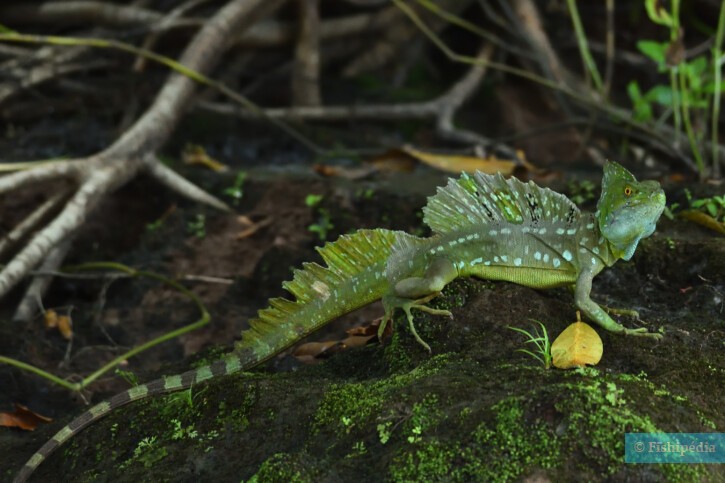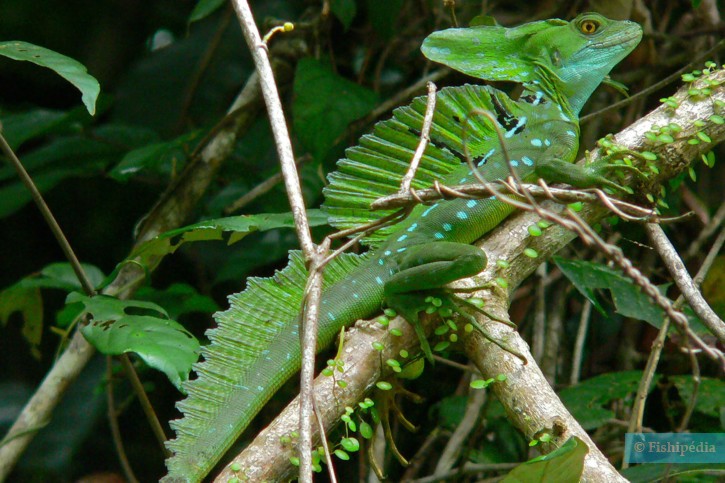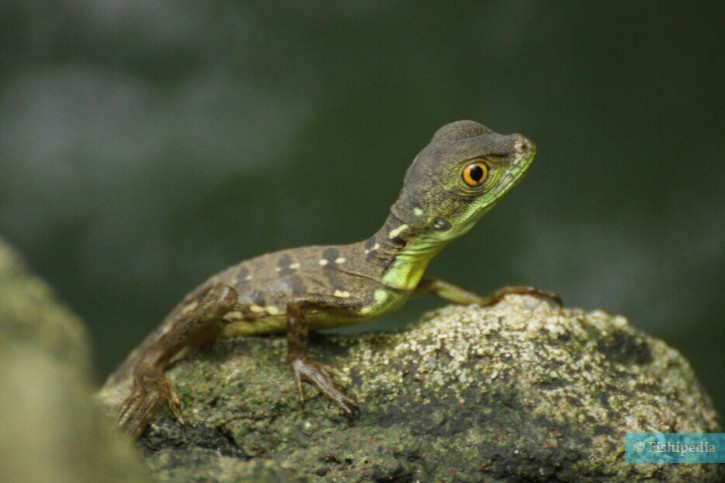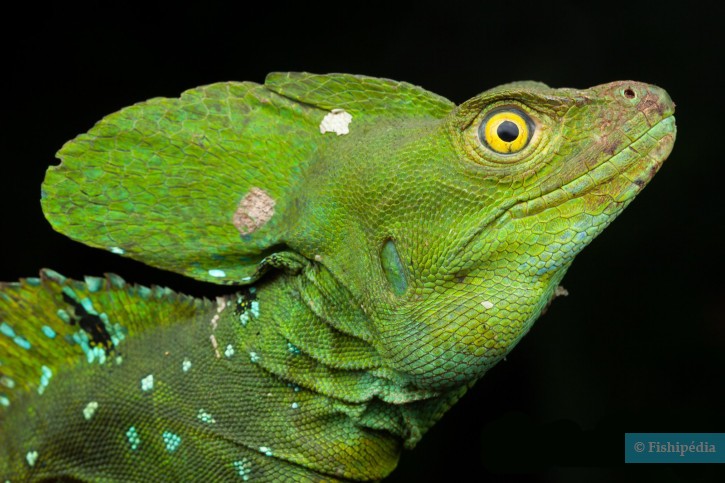green basilisk
| Scientific name | Basiliscus plumifrons |
|---|---|
| Descriptor | Cope |
| Year of description | 1875 |
| IUCN category (World) | LC |
| Family | Corytophanidae |
| Genus | Basiliscus |
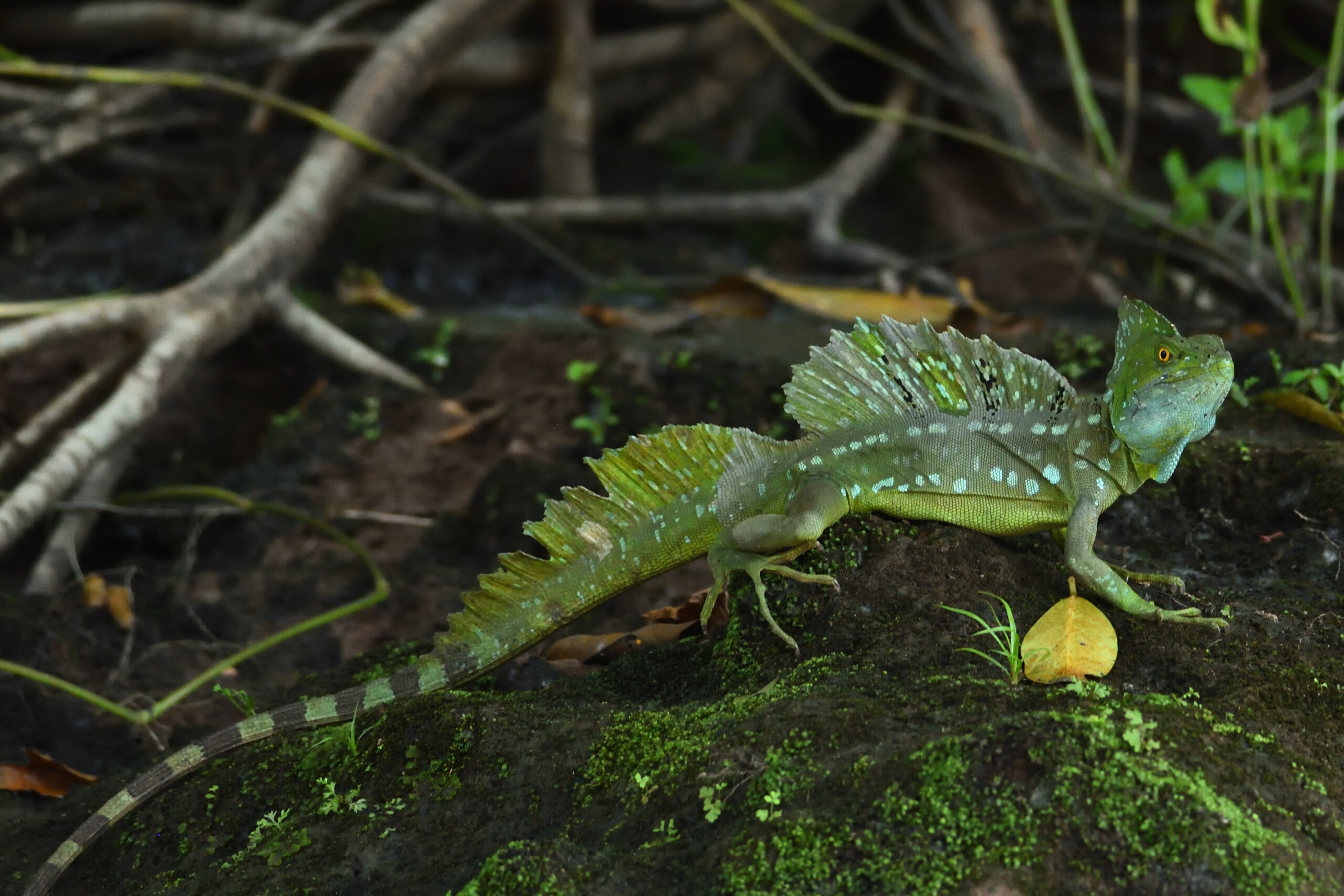

Introduction
Basiliscus plumifrons, commonly known as green basilisk, is a fresh water reptile from the Central America.
This sheet is currently being prepared. The texts currently proposed come from our data model or are being drafted. To request priority for this content, you can write to us HERE.
Who is it?
Morphology
-
Size52 - 80 cm
-
Weight200 - 500 kg
-
Motifponctuations
-
Mimicryplants
-
Size52 - 80 cm
-
Weight200 - 500 kg
-
Motifponctuations
-
Mimicryplants
How to recognize This reptile ?
The green basilisk measures around 52 cm. The dominant males can however reach 80 cm. This reptile is unicolore with a predominantly vert body. The also has bleu ponctuations.
Sexual dimorphism
The adult male is bigger than the female.
Behaviour & Life cycle
-
SociabilityThe following information corresponds to the mode of sociability once sexual maturity has been reached.solitary
-
Way of livingdiurnalAn animal is said to be diurnal when it lives during the day.
-
VenomousNo
-
Dietpredator
The green basilisk is a reptile solitary naturally found Terre. This species is carnivorous .
Although the green basilisk is non-territorial, it is sometimes aggressive towards other species. In a constant quest for dominance, the dominant males of this species cannot stand each other. The battle between two individuals can be intense and violent. It will result in the submission and sometimes even death of one of the protagonists.
Reproduction
-
Reproductionovipare qui pond sur substrat caché
-
Clutch size2 - 18 eggs
The green basilisk is a reptile ovipare qui pond sur substrat caché. This reptile protects its eggs from nearby predators.
Harmless species
This species does not represent any particular threats to humans when encountered in its natural environment.
Origin and distribution
What is its habitat?
Natural environment characteristics
-
Temperature20 - 30 °C
Biotope presentation
The acidification of water comes from the decomposition of plants. This phenomenon changes the color of the water, which tends to turn brown. In some areas particularly rich in organic matter, the water is so dark that it is called "black water".
The green basilisk is most often found at a depth between 0m and 1m. However, it is not impossible to find this species at other depths.
To go further
Sources & Contributions
Participation & Validation
The Fishipedia team and specialist contributors are committed to providing high-quality content. However, although the information comes from scientific sources or testimonials from specialists, the cards may contain inaccuracies.

Benoit Chartrer
Translation
Translation done with the valuable contribution of our translators, who make this information available to a wider audience. We sincerely thank them for their commitment.
Bibliographic references
River rocks as sleeping perches for Norops oxylophus and Basiliscus plumifrons in the Cordillera de Talamanca, Costa Rica - Rafael A. Lara-Resendiz - Yaredh Ramírez-Enríquez - Isaí Valle-Jiménez - Jorge H. Valdez-Villavicencio - Fausto R. Méndez-De La Cruz - Patricia Galina-Tessaro - Mesoamerican Herpetology - 2017.
Scientific partners
Tags
